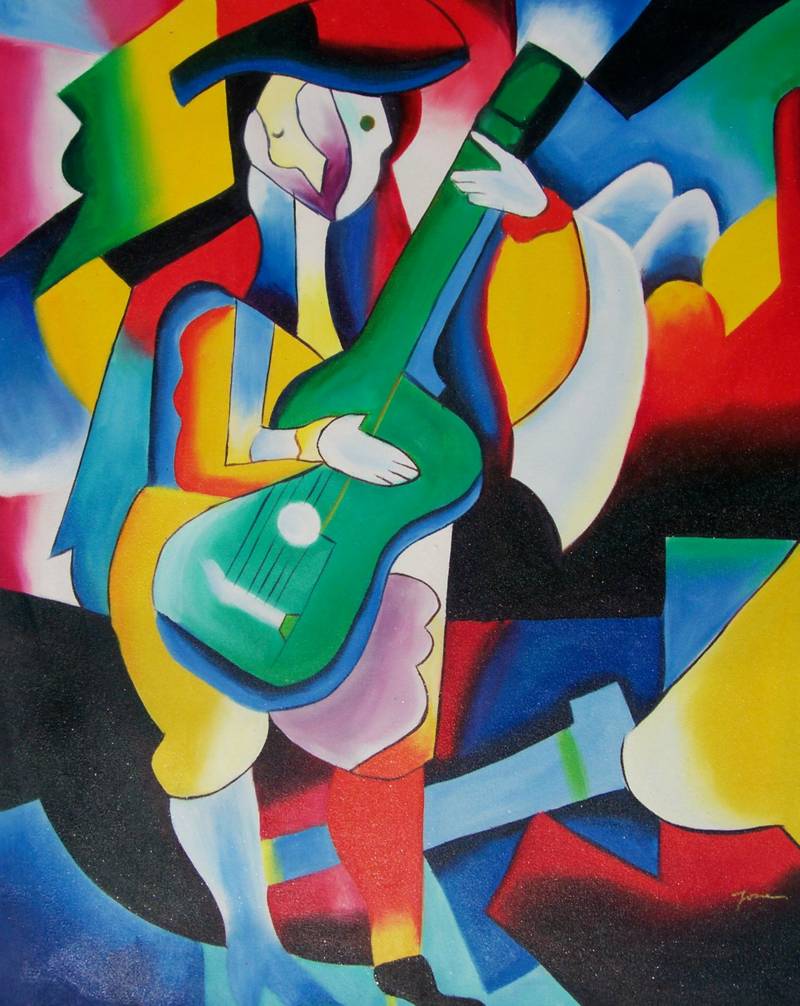

Homme assis (Seated Man) (1914) by Roger de La Fresnaye Roger de La Fresnaye, Public domain, via Wikimedia CommonsĪs Cubism directly challenged the Renaissance’s depiction of space, many artists experimented with the idea of non-representation in the paintings that were produced. This allowed the background and foreground in Cubism paintings to merge, which was seen as very futuristic at the time. Rather than being formed to fit into an illusionistic space, figures and objects were portrayed as dynamic and lively compositions made up of volume and planes. When viewing Cubist paintings, no realistic scenes were portrayed as artists chose to explore the space in which the figures and objects existed instead.Īnother important aspect of Cubism was the emphasis placed on architecture, structure, and form. These two elements were crucial within Cubist paintings, as a very analytical and geometric approach was taken when representing subjects in these works. In addition to rejecting perspective, Cubism artists portrayed and manipulated light and shadows in a variety of ways so as to effectively break down objects into several flat planes. La table du musicien ( The Musician’s Table) (1926) by Juan Gris Juan Gris, Public domain, via Wikimedia CommonsĪs artists went on to develop their own type of terminology of cones, cubes, spheres, and cylinders, their paintings abandoned the element of perspective which was previously used to define pictorial space. By displaying several points of view at the same time, artists hinted at a possible three-dimensional nature within their works whilst also showing off the two-dimensional flatness of the canvas. Instead of portraying subject matter from a single viewpoint, which was the standard in traditional art, Cubist paintings made use of multiple viewpoints so as to represent the subject in a greater context. Thus, despite being a short movement, Cubism proved to be highly significant based on the various offshoots that occurred, as artists displayed a great interest in this advanced style of art.įocusing on the aspect of fragmentation, Cubist artists examined, broke up, and reassembled objects and figures in new and abstracted forms. The subsequent impact of Cubism was far-reaching, with this geometric style being divided into two distinct phases known as Analytic and Synthetic Cubism. Picasso and Braque, in particular, felt that the worn-out standards of art had run their course and that an entirely new and groundbreaking movement was needed.

The paintings created helped usher in the most innovative chapter of art history that was seen at the time, as Cubism artworks went on to instigate an authentic cultural awakening. This led to the movement being viewed as an avant-garde movement, as artists assertively challenged Western core conceptions of graphic representation. Seen as a revolutionary new way to represent reality, objects and people were generally depicted from lots of different angles to the point where a kaleidoscopic view was achieved. This was achieved through using the aspects of perspective and tone in completely different ways, as well as the creation of distinct planes to show different points of view at the same time.įemme nue lisant (Nude Woman Reading) (1920) by Robert Delaunay Robert Delaunay, Public domain, via Wikimedia Commons Famous Cubism art highlighted the two-dimensional nature of the canvas as opposed to creating an impression of depth, which was the prior focus of artists. The movement was eventually given its iconic name by art critic Louis Vauxcelles who, upon seeing Braque’s exhibited works in 1908, described them as reducing all elements to mere outlines and cubes. This led to rapid artistic experimentation being done by both Picasso and Braque, with the latter firmly introducing the movement to the public during a one-man exhibition in 1908. Pioneered by notable artists Pablo Picasso and Georges Braque, Cubism developed in reaction to Picasso’s shocking Les Demoiselles d’Avignon, which he painted in 1907. Spanning between 19, Cubism developed in Paris at the turn of the 20 th century as a radical movement that broke away from the well-established traditions governing contemporary art. 3.9 Still Life Before an Open Window, Rue Ravignan – Juan Gris.3.7 Conquest of the Air – Roger de La Fresnaye.3.6 Still Life with Chair Caning – Pablo Picasso.3.2 Houses at I‘Estaque – Georges Braque.3.1 Les Demoiselles d ‘Avignon – Pablo Picasso.

3 Our Top 10 Most Famous Cubist Paintings.


 0 kommentar(er)
0 kommentar(er)
